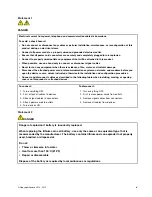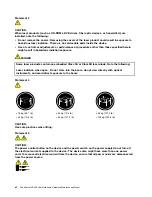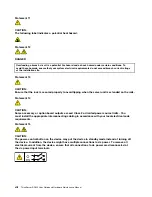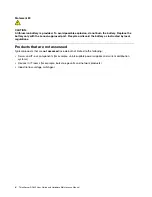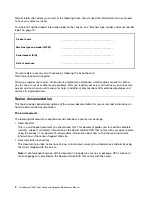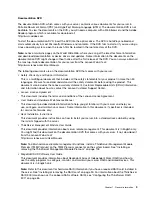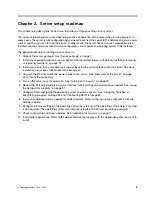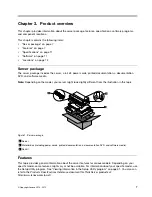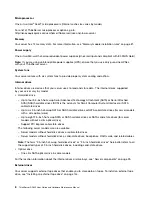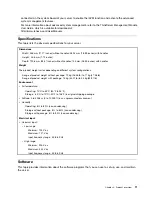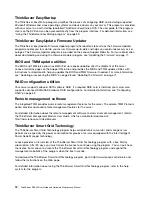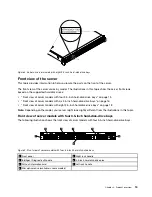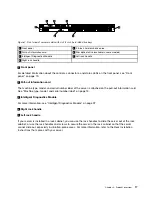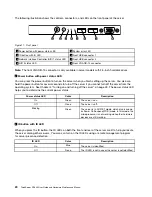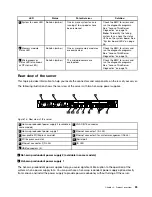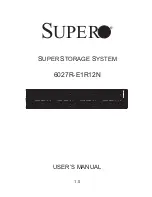
Expansion slots
• Two riser card assembly slots on the system board
• One PCI Express card slot on the riser card assembly 1
• One PCI Express card slot on the riser card assembly 2
For detailed information, see “Rear view of the server” on page 23.
Input/Output (I/O) features
• One or two Video Graphics Array (VGA) DB-15 connectors
• One serial connector on the rear panel
• Six USB 2.0 connectors (two on the front panel and four on the rear panel)
• Three RJ-45 Ethernet connectors on the rear panel (Ethernet connector 0 is for system management)
For the location information about the connectors, refer to the related topics in “Locations” on page 13.
Video subsystem
An integrated graphics controller in the ThinkServer Management Module (TMM), which also is known as the
Baseboard Management Controller (BMC) chip, is installed on the system board to support VGA connectors
for connecting video devices
Ethernet connectivity
There are three RJ-45 Ethernet connectors on the rear panel with 10 megabits per second (Mbps), 100
Mbps, or 1000 Mbps network connectivity. The Ethernet connector 0 is for system management by default.
However, you also can set the Ethernet connector 1 or 2 for system management use in the Setup Utility
program. See “Setting the mode of the Ethernet connectors” on page 57.
For more information, see “Rear view of the server” on page 23.
Reliability, availability, and serviceability
Reliability, availability, and serviceability (hereinafter referred to as RAS) are three important server design
features. The RAS features help you to ensure the integrity of the data stored on the server, the availability of
the server when you need it, and the ease with which you can diagnose and correct problems.
Your server has the following RAS features:
•
Security features
– Administrator password and user password to help protect unauthorized access to the server (see
– ThinkServer Trusted Platform Module (TPM), which is a security chip, to help enhance server security
Note:
The TPM is only available in some models.
– Remote monitoring or control by an administrator to provide protection or help
– Hot-swap redundant power supplies to help avoid significant interruption to the operation of the
system when a power supply fails
•
Basic system management features
– Ability to store the power-on self-test (POST) hardware test results
– BIOS Setup Utility program
9
Summary of Contents for ThinkServer RD340
Page 18: ...6 ThinkServer RD340 User Guide and Hardware Maintenance Manual ...
Page 84: ...72 ThinkServer RD340 User Guide and Hardware Maintenance Manual ...
Page 188: ...176 ThinkServer RD340 User Guide and Hardware Maintenance Manual ...
Page 198: ...186 ThinkServer RD340 User Guide and Hardware Maintenance Manual ...
Page 214: ...202 ThinkServer RD340 User Guide and Hardware Maintenance Manual ...
Page 215: ......
Page 216: ......

